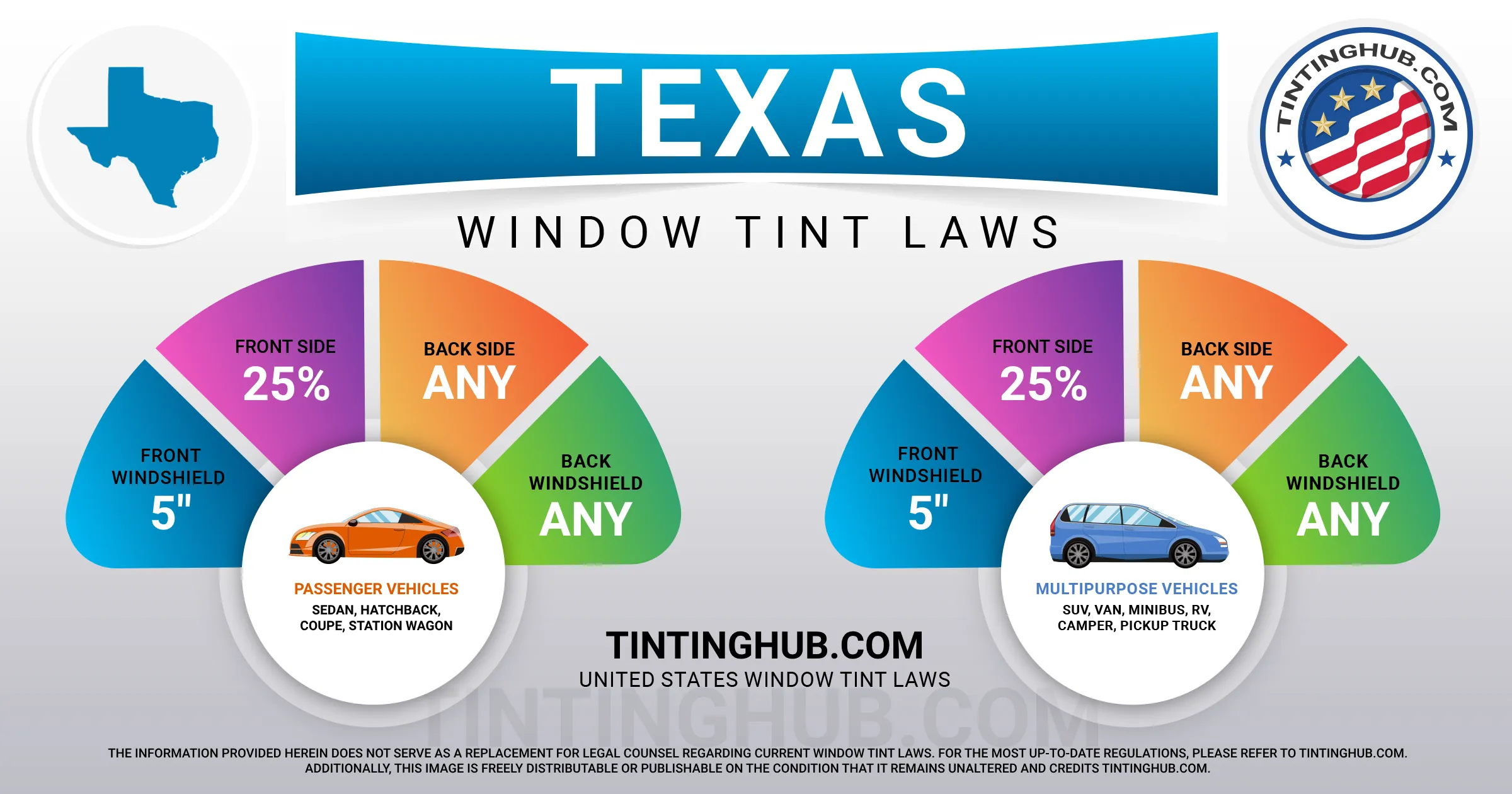When it comes to car window tinting, staying within the legal boundaries is crucial. In Texas, window tinting laws were established in 2009 to ensure safety and visibility on the road. In this article, we’ll provide you with a complete overview of Texas window tinting laws, including the permissible darkness levels and other essential regulations you need to know.

Window Tint Darkness Regulations in Texas
In Texas, we measure the darkness of your car’s window tint using VLT, which stands for Visible Light Transmission. The VLT percentage indicates how much visible light your car windows can allow. These regulations vary for sedan cars and SUVs or vans.
Tint Darkness for Sedans
- Windshield: A 25% VLT tint is allowed above the manufacturer’s AS-1 line or the top 5 inches, with less than 25% reflection.
- Front Side Windows: These windows must allow more than 25% of light in.
- Back Side Windows: Any level of darkness can be used.
- Rear Window: Any darkness is permitted, but if you have side outside mirrors, you can go as low as 25% VLT without them.
Tint Darkness for SUVs and Vans
- Windshield: Similar to sedans, a 25% VLT tint is allowed above the manufacturer’s AS-1 line or the top 5 inches, with less than 25% reflection.
- Front Side Windows: They must also allow more than 25% of light in.
- Back Side Windows: As with sedans, any level of darkness can be used.
- Rear Window: You can use any darkness for the rear window, but with side outside mirrors, you can go as low as 25% VLT.
Window Tint Reflection Laws in Texas
Window tint not only adds privacy but also helps reduce glare and heat. Texas law allows a specific level of reflection for tinted windows. Here’s what you need to know:
Tint Reflection for Sedans
- Front Side Windows: These windows must not be more than 25% reflective.
- Back Side Windows: Like the front side windows, the rear ones must not exceed 25% reflectivity.
Tint Reflection for SUVs and Vans
- Front Side Windows: Similar to sedans, the front side windows on SUVs and vans must not be more than 25% reflective.
- Back Side Windows: The same 25% reflective rule applies to the rear side windows of SUVs and vans.
Additional Texas Window Tint Regulations
In addition to darkness and reflection regulations, Texas has several other important laws and regulations related to window tinting:
Side Mirrors
For safety and visibility, you must install dual side mirrors if you tint your rear window.
Restricted Tint Colors
Texas tint laws prohibit the use of red, blue, and amber tints on windshields.
Certificates
Film manufacturers must certify the film they sell in the state. Make sure that your dealer is using certified film.
Stickers
You must place a sticker between the film and the glass on the driver’s side window to identify legal tinting.
Medical Exceptions
Texas provides medical exemptions for special tint. If you require such an exemption, consult Texas tint laws for specific terms and conditions.
Remember that the interpretation of Texas tinting laws and regulations may vary by county or place of residence. It’s always a good practice to double-check the information with your local DMV or law enforcement authorities to ensure compliance.
We last updated our information about Texas window tint laws in 2023. If you discover any inaccuracies or outdated information, please do not hesitate to contact us. We dedicate ourselves to offering accurate and up-to-date information on window tinting regulations, guaranteeing your safety and legal compliance on the road.
Trust in us, the industry leader, to provide you with the most reliable and accurate information on window tint laws. Your safety is our priority.
1 thought on “Texas Window Tint Laws (Last Update 2024)”
Comments are closed.